Last week, we took advantage of a warm day to do some hiking in Wekiwa Springs State Park. The park has a pretty varied landscape- aside from the eponymous spring and spring run, with its riparian swamp, there are oak savannah & pine flatwoods communities. We ended up hiking about 4 miles round-trip from the main parking area by the spring to the tiny Sand Lake.
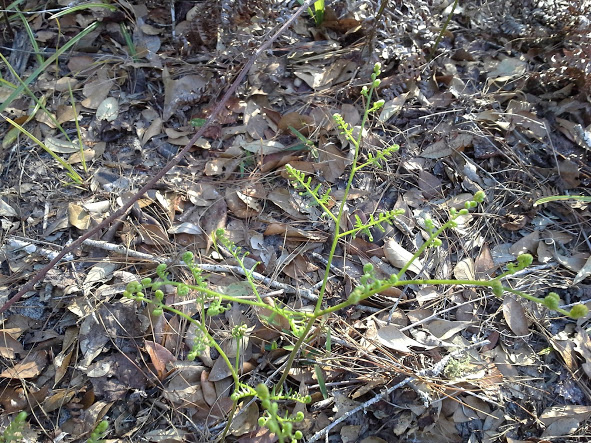
Once you get out of the swampy hammock near the spring, a few feet of elevation difference is enough to make the landscape very dry. I’ve heard peninsular Florida called a desert with a monsoon season, and we’re definitely in the dry season now (though it’s ironically raining as I write this- but the first rain we’ve had in over two weeks).
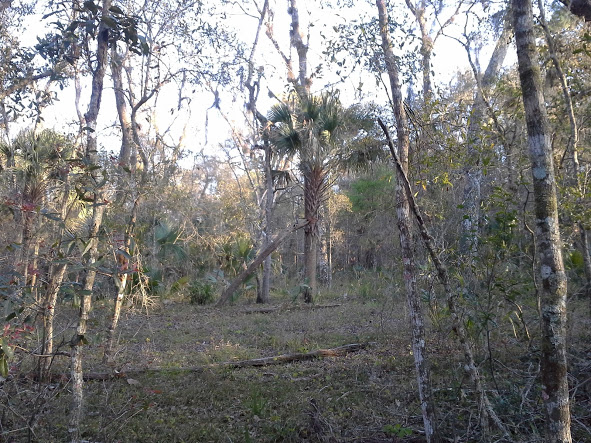
We did see a few flowers blooming, but I think the majority of the floral action happens a bit later in the year. I wasn’t able to ID these plants, but they soften this log in an interesting way:
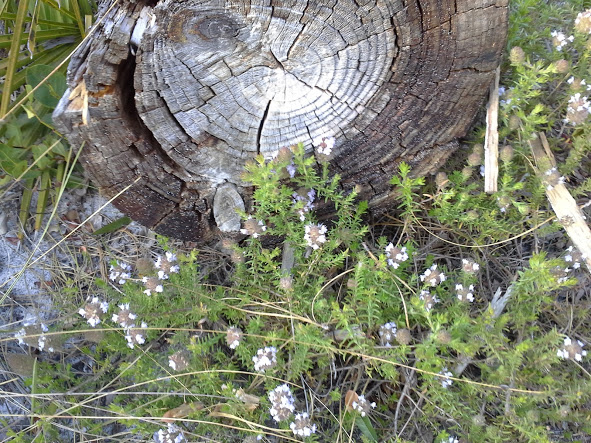
The trail runs pretty close to the road- other trails do go into the parts of the park where you can’t drive, and I think we’ll explore those next time we come here. Wekiwa Spring itself is endangered by excessive water withdrawal and nutrient pollution from fertilizer use and poorly-regulated septic tanks in the area. When you’re walking on dry, sandy soil like this, it’s sometimes hard to remember that only a few feet underground there’s a shallow but wide groundwater system. Any change to that water affects the spring.
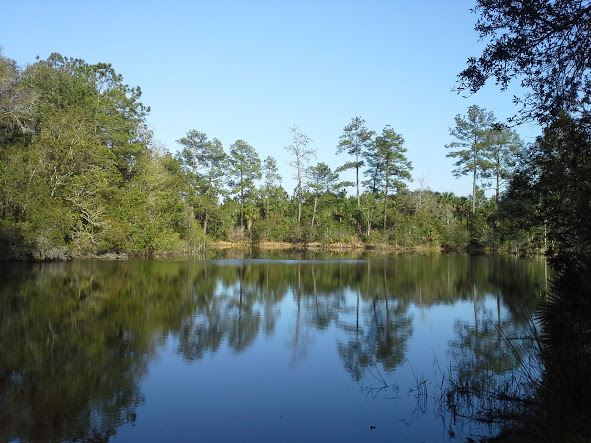
We saw a fair number of birds, given that it was fairly late in the day- there was a lot of warbler & gnatcatcher activity in the trees overhead. We also heard a barred owl that was probably roosting near the spring area, and saw several swallow-tailed kites soaring gracefully overhead. I’ve seen kites dip down in flight to drink water from the river at Wekiwa before- a pretty neat sight.
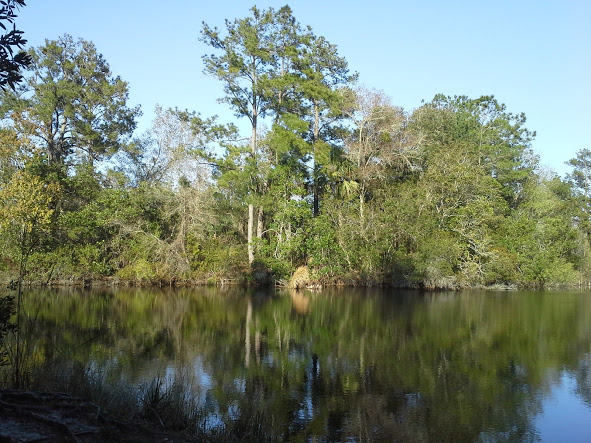
One thing that would have made the experience more enjoyable was bug spray- the mosquitoes aren’t out yet, but we were unpleasantly surprised that the population of no-see-um’s was going strong already. Though at least no-see-um bites don’t itch.
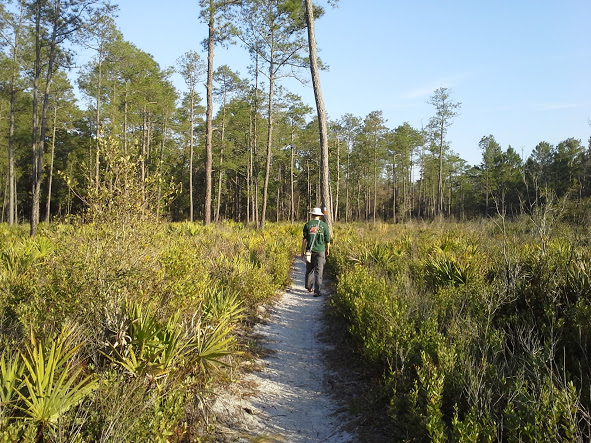
We saw several other people on the trail, including a few people walking their dogs. Noe is definitely not the type of pet that can go on hikes with us- especially with all the aerial predators and who knows what lurking in the underbrush.
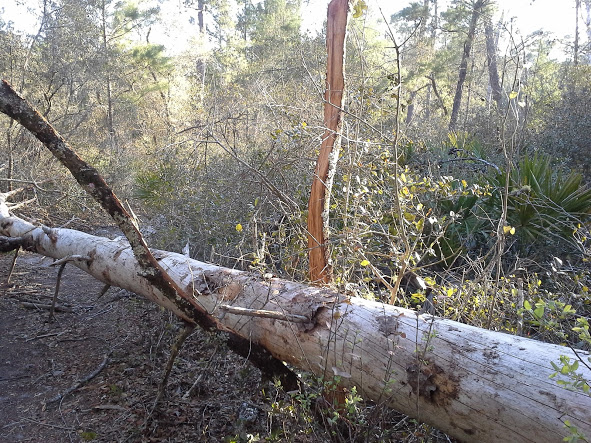
One interesting thing we noticed was that in places near water, the moister air was really evident. So it’s not just the soil that has large moisture variations-it’s the air as well.
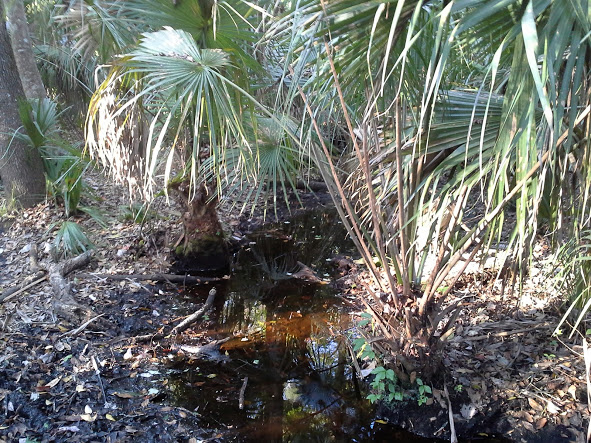
I find the oaky areas generally prettier to walk through than the drier plant communities. Though obviously this is an aesthetic preference. I like the dappled light through the branches and their clinging lichens.
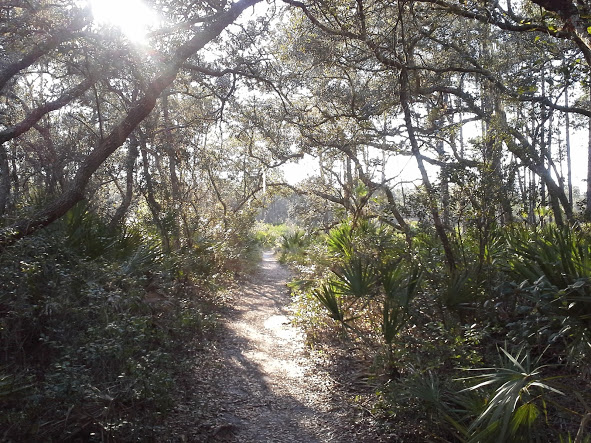
Aside from birds, we saw a few arthropods and the ubiquitous gray squirrels. We didn’t see any fox squirrels, though they’re supposed to live in the park.
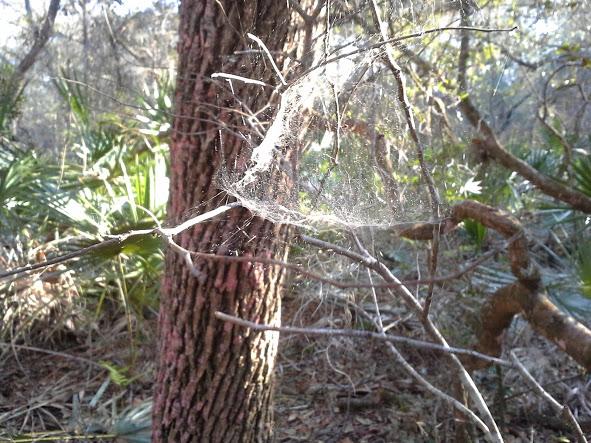
The day’s bird list: Black Vulture, Turkey Vulture, Swallow-tailed Kite, Red-shouldered Hawk, Mourning Dove, Barred Owl, Red-bellied Woodpecker, Yellow-bellied Sapsucker, Downy Woodpecker, Carolina Chickadee, Carolina Wren, Blue-gray Gnatcatcher, Ruby-crowned Kinglet, Hermit Thrush, American Robin, Gray Catbird, Black-and-white Warbler, Northern Parula, Palm Warbler, Pine Warbler, Yellow-rumped Warbler
All in all, it was a nice short hike. Definitely a place to return to and explore further- both by foot and by canoe.